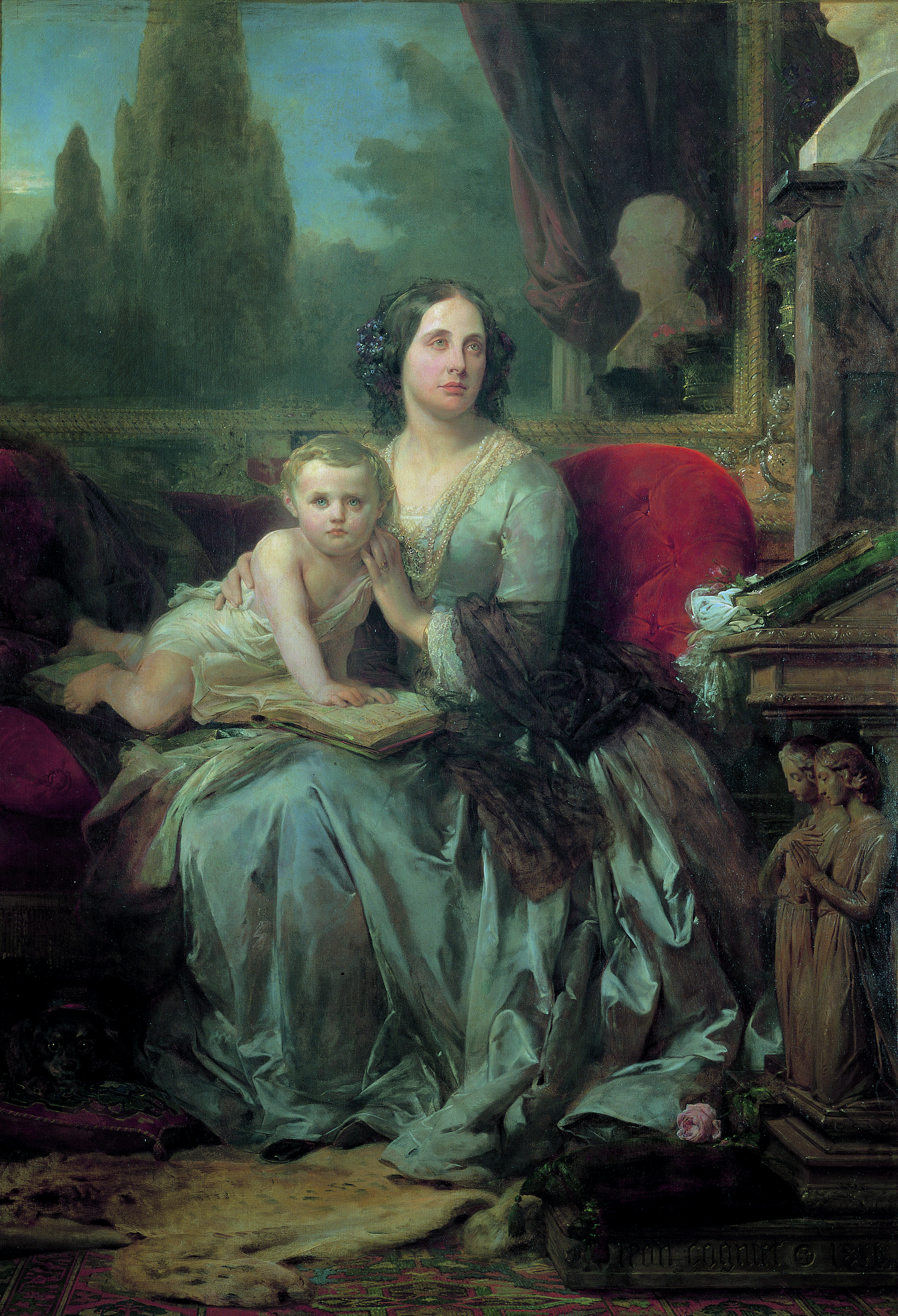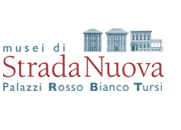
Click here to view image
Portrait of Maria Brignole Sale with her son Filippo
Brignole-Sale De Ferrari Maria 1889 Genova - donazione
Cogniet, Léon
painting
PB 12
olio su tela
Maria Brignole-Sale De Ferrari, Duchess of Galliera, was one of the most generous figures in the city. The last descendant of the noble Brignole-Sale family, she spent most of her life in Paris, where her husband, Raffaele De Ferrari, one of the most skilled, fortunate and wealthy financiers of his time, carried out his business. After his death, having inherited an immense fortune and having no heirs, since her only surviving son, her second son Filippo, renounced his surname and, with it, the family inheritance, the duchess devoted herself to great charitable works, founding nurseries, hospitals (the Galliera hospital is still the second largest in Genoa today) and orphanages, both in France and in Genoa. In 1874, she donated Palazzo Rosso, the ancestral home of the Brignole-Sale family, to the City of Genoa, along with the art collections it contained, as a lasting testimony to the family's magnificence. This act was followed by a bequest in her will (1889) granting the city Palazzo Bianco and another rich collection of paintings and sculptures. Léon Cogniet, a portrait painter who was extremely well known in France at the time for his ability to evoke the intimate personality of his subjects, painted her in his prestigious Parisian residence, the Hôtel de Matignon, now the official residence of the French Prime Minister, as she held her second son, Filippo, on her lap, leaning on the ancient Brignole Bible. Almost oblivious to him, Maria casts a melancholic glance towards the marble bust reflected in the mirror at the end of the wall; it depicts Andrea, her eldest son, who died at the age of fourteen, to whom the rose placed on the kneeler also alludes, as a sign of a tender flower destined to perish. The painting depicts the Duchess of Galliera with her son, both sitting on a sofa; the child is positioned on the left side of the painting and is supporting himself with his arms, which he has placed on an open book on his mother's lap. On the right is a kneeler with two caryatid angels, and slightly above it, a marble bust can be glimpsed. Behind the two figures, a large mirror reflects the scene of a wooded landscape; at the woman's feet are a Persian rug and a leopard skin; a small dog is drawn on a cushion nearby.




